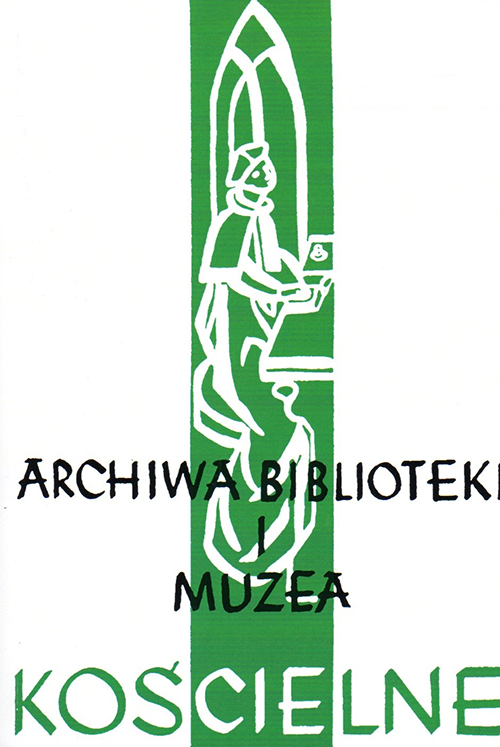Zapiski o cudach z 1148 roku w Biblii Płockiej
The notes of the miracles of 1148 in the Bible of Płock
Author(s): Leszek MisiarczykSubject(s): Christian Theology and Religion, History, Library and Information Science, Theology and Religion
Published by: Katolicki Uniwersytet Lubelski Jana Pawła II - Wydział Teologii
Keywords: the notes of Płock; the Bible of Płock; miracles
Summary/Abstract: The famous notes in the Bible of Płock are the oldest documented written texts created on the Polish territory. A great deal of false information which grew up around them was repeated by the next generations of historians without proper research. First, there is no indication that, according to Berhson, the cards 239v and 240R-v in the Bible of Płock were left blank, where later our notes were made. Secondly, the notes of the miracles and the liturgy of the cathedral were not made in the margins of the Code, which is often incorrectly presented in different studies, but in two columns, like the text of the Bible before and after them. The notes of the miracles were made by the same scribe, but in a different handwriting than the entire Code: either the Code was created in 1148 and the notes of the miracles were added later or the Code was created at the same time when the miracles happened and the notes were included at the time of writing the Code or the Code was created later and the notes were also added later. There are many indications that the notes of the miracles were included during the preparation of the Code. In any case, the Code was probably created in 1148 or about that date and a vivid description of the miracles seems to indicate that the notes were made shortly after the events themselves, or after 15 August 1148 or early 1149. The first miracle was the healing of a woman, named Wojuchna, of paralysis on the feast of the Assumption of the Blessed Virgin Mary on 15 August 1148, and the other one concerned the relics placed in an ostrich egg under the ceiling of the Cathedral of Płock and saving them miraculously when they fell down. Since the notes were not made in the margins the Code, but placed in a string of columns of the biblical text which was copied then, it confirms clearly that the Bible of Płock was copied in the local scriptorium. This means that in the middle of the twelfth century there existed a scriptorium in Płock, where biblical and liturgical books were copied for the cathedral liturgy and the local school. The notes were probably made by order of the then Bishop of Płock, Alexander of Malonne and it is possible that they were made by the director of the scriptorium, mentioned in the first note-Azo, though due to missing elements, it cannot be confirmed. The other note mentioning a scholar Zacharias confirms the existence of a school attached to the Cathedral in Płock in the middle of the twelfth century.
Journal: Archiwa, Biblioteki i Muzea Kościelne
- Issue Year: 2015
- Issue No: 104
- Page Range: 189-201
- Page Count: 13
- Language: Polish

